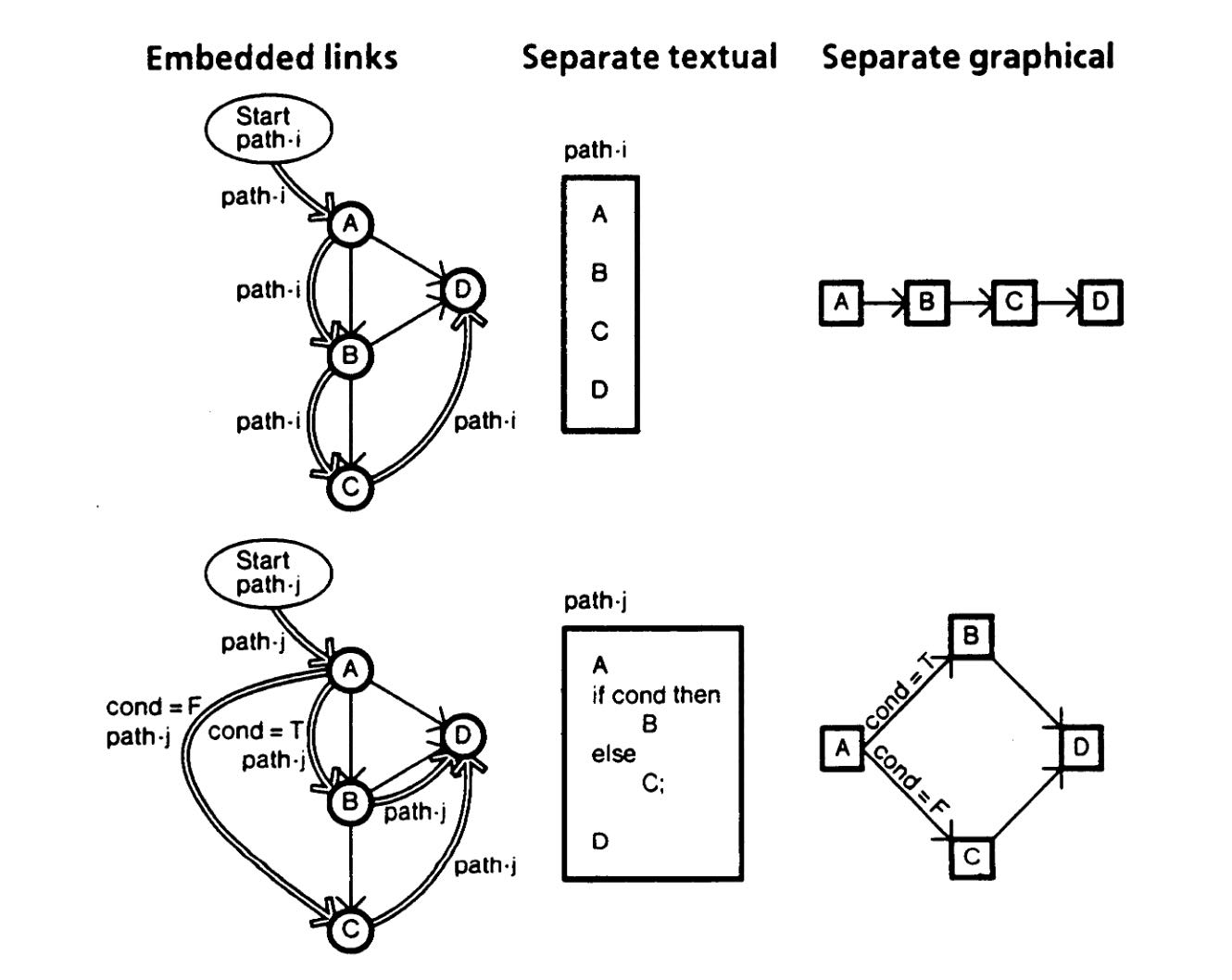Issues of where hypertext systems should store their links are currently [1989] being debated within the hypertext community. Paths present similar issues.
A path mechanism can store its path links with other hypertext links, or it can store its path links separately. In either case, the information stored must support path playback and path visualization.
Figure 1 displays two paths expressed in three ways: as embedded links, as a separate textual path, and as a separate graphical path.

Figure 1. Alternative Path representations.
Three different representations of paths are shown for linear (top) and conditional (bottom) paths. On the left. circles represent hypertext nodes. while double-line arrows represent path links embedded in the hypertext network.
~
ZELLWEGER, P. T., 1989. Scripted documents: a hypermedia path mechanism. In: Proceedings of the second annual ACM conference on Hypertext. Online. New York, NY, USA: Association for Computing Machinery. 1 November 1989. p. 1–14. [Accessed 17 March 2023]. HYPERTEXT ’89. ISBN 978-0-89791-339-3. DOI 10.1145/74224.74225. The concept of a path, or ordered traversal of some links in a hypertext, has been a part of the hypertext notion from its early formation. Although paths can help to solve two major problems with hypertext systems, namely user disorientation and high cognitive overhead for users, their value has not been recognized. Paths can also provide the backbone for computations over a hypertext, an important issue for the future of hypertext. This paper constructs a framework for understanding path mechanisms for hypertext and explores the basic issues surrounding them. Given this framework, it reviews path mechanisms that have been provided by other hypertext systems. Finally, it describes the Scripted Documents system, which has been developed to test the potential of one powerful path mechanism.
KUHLEN, Rainer, 1991. Hypertext: ein nicht-lineares Medium zwischen Buch und Wissensbank. Berlin: Springer. Edition SEL-Stiftung. ISBN 978-3-540-53566-9, p. 149.